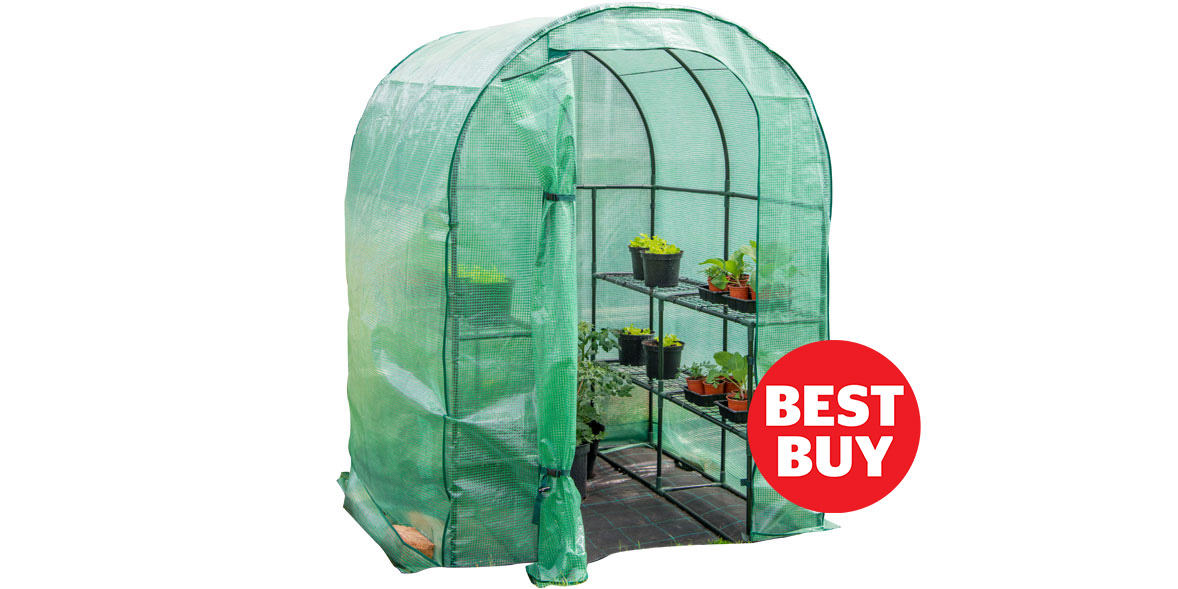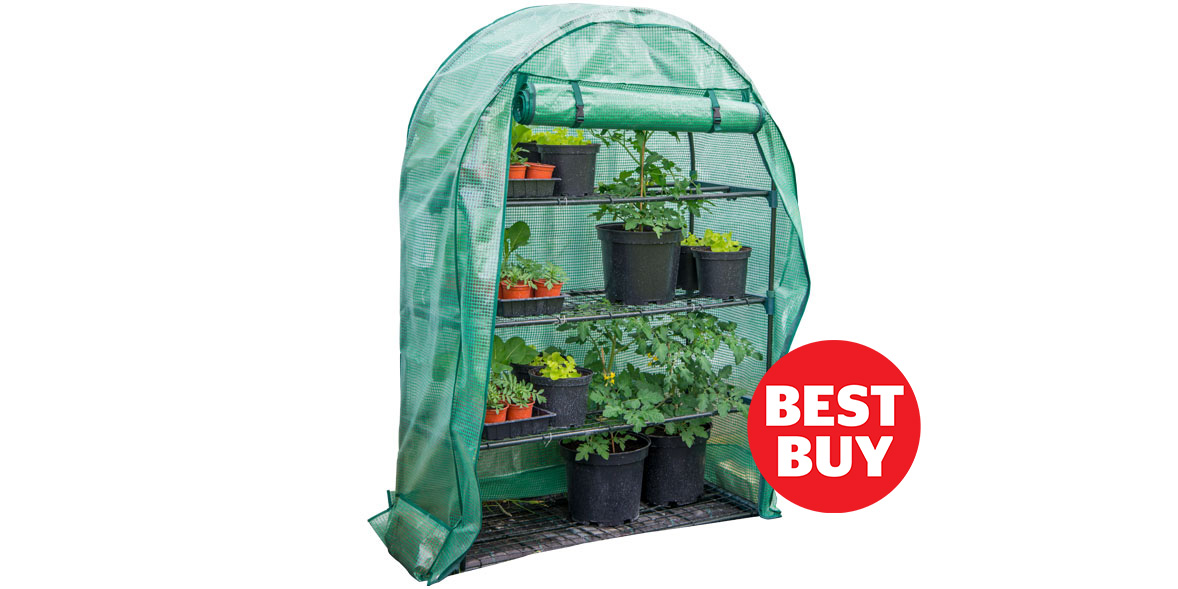
25% off Which? Gardening
Pay £36.75 for the first year and get the garden you want for less
Get this offer
Owning a greenhouse is a dream for many people but might not be realistic if your garden, or your budget, is small.
A ‘pop-up’ greenhouse could keep that dream alive, though. Cheap and easy to put up, these polythene-covered, slot-together structures promise to extend the growing season and give you many of the benefits of a more expensive glass greenhouse.
But what can you grow in them, how easy are they to use and do they last?
Breathe new life into your outside spaces. Sign up for our Gardening newsletter, it's free monthly

Overall score: 83%
Size (height x width x depth in cm) 170 x 118 x 44
Price: £47.99
Where to buy: Amazon
This covered shelving unit was very simple but wide enough to give plenty of growing space. The tall, curved roof gave room for growth and allowed the front cover to be rolled out of the way, making watering plants on the top shelf easy. It can’t be fixed halfway for ventilation but zips could be partly opened. It didn’t get too hot or cold, though, so we got good seed germination and a fantastic crop of tomatoes.

Overall score: 80%
Size (height x width x depth in cm) 195 x 138 x 141
Price: £69.95
Where to buy: Amazon; South Eastern Horticultural
This was one of two walk-in models in the trial and, while it was easy to put together, its size meant this took a bit longer than with the smaller ones. Pockets in the polythene skirts can be filled with sand or other weights to increase stability which is very handy. Ventilation is easy to control because the door (which opens on the right rather than on both sides as many do) can be held partially or fully open with the clip-together strap supplied.

Overall score: 72%
Size (height x width x depth in cm) 160 x 105 x 45
Price: £24.95
Where to buy: Amazon; Marshalls Garden
Almost as wide as the Gro Zone, this gave good growing space, was stable and easy to put together. The front of the cover could be rolled up completely or left down, but zips could be partially undone for ventilation. We got very good tomato crops, while best seed germination and lettuce sizes were achieved on higher shelves so we suggest rotating smaller plants between lower and higher shelves.
| Product name | Overall rating | Ease of assembly | Ease of fixing | Ease of use | Design and durability | Temperature range | Success with crops |
|---|---|---|---|---|---|---|---|
| Best Buy Smart Garden Gro Zone Max | 83% | ||||||
| Best Buy Gardman Grow It Premium Walk In Growhouse 2 shelves | 80% | ||||||
| Best Buy Gardman Grow It Premium 4 Tier Extra Wide Growhouse | 80% | ||||||
| Smart Garden Classic 4 Tier Gro Zone with extra fleece cover | 71% | ||||||
| Wilko Mini Greenhouse | 71% | ||||||
| McGregor 2 Tier Mini Greenhouse | 68% |
Using the table: The more stars the better. Overall rating: Ignores price and is based on: ease of fixing 20%; ease of use including ventilation and watering 20%; design and durability 20%; success with crops including germination of seeds, growth of seedlings, and weight of lettuces and tomatoes 20%; ease of assembly 10%; temperature range including average maximum and minimum 10%.
| Product name | Overall rating | Ease of assembly | Ease of fixing | Ease of use | Design and durability | Temperature range | Success with crops |
|---|---|---|---|---|---|---|---|
| Gardman Grow It Premium Walk In Growhouse 2 shelves | |||||||
| Gardman Grow It Premium 4 Tier Extra Wide Growhouse | |||||||
| McGregor 2 Tier Mini Greenhouse | |||||||
| Smart Garden Classic 4 Tier Gro Zone with extra fleece cover | |||||||
| Smart Garden Gro Zone Max | |||||||
| Wilko Mini Greenhouse |
Using the table: The more stars the better. Overall rating: Ignores price and is based on: ease of fixing 20%; ease of use including ventilation and watering 20%; design and durability 20%; success with crops including germination of seeds, growth of seedlings, and weight of lettuces and tomatoes 20%; ease of assembly 10%; temperature range including average maximum and minimum 10%.

Pay £36.75 for the first year and get the garden you want for less
Get this offer